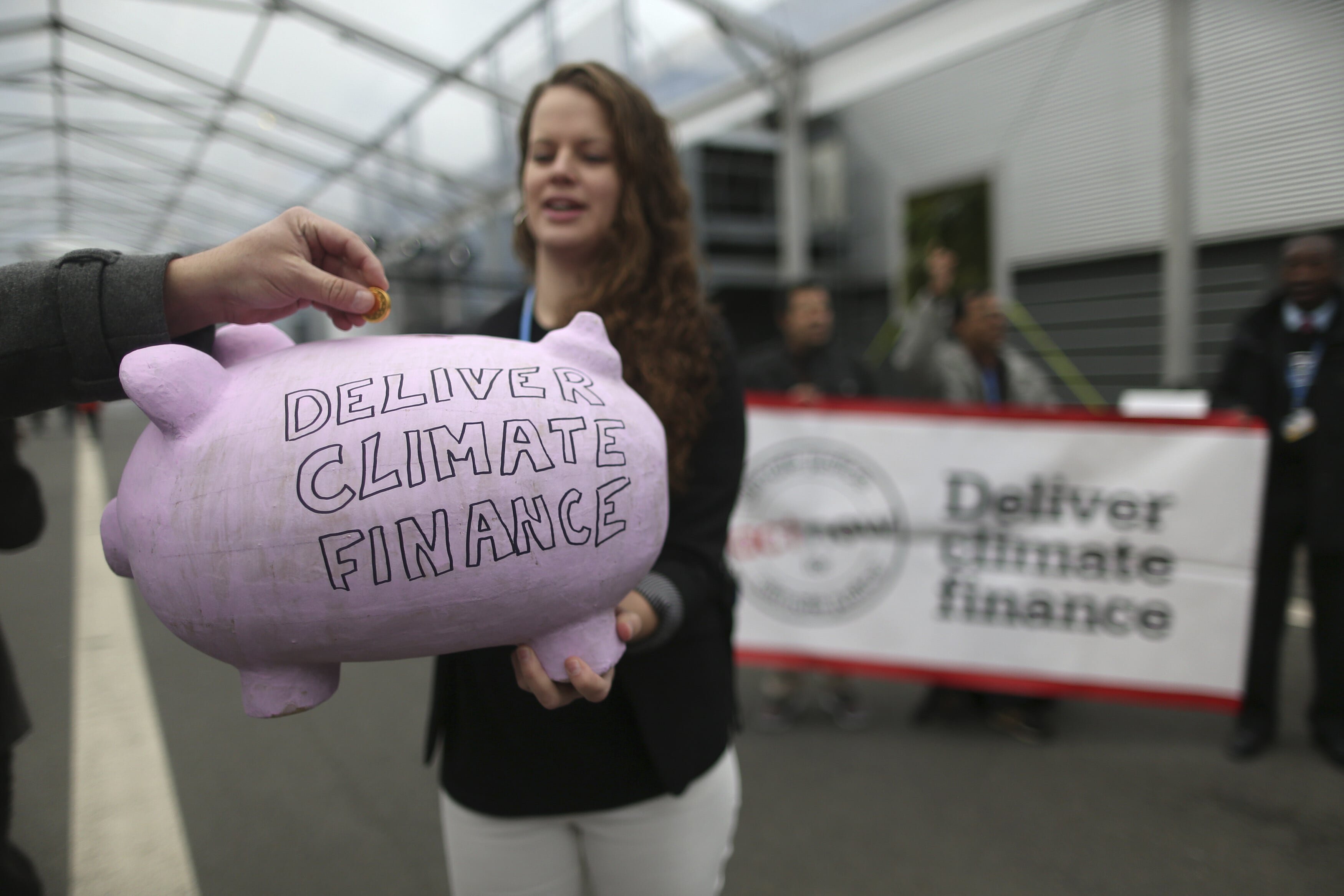Is there a green revolution happening in bond markets?

An offshore wind farm stands in the water.
Image: REUTERS/Bob Strong
Stay up to date:
Banking and Capital Markets
Last month, at the Paris climate change negotiations, 195 nations committed to collectively achieve net-zero emissions by mid-century and to keep the increase in global temperature “well below 2°C” by 2100.
Achieving these goals will require time, effort and money—an additional $40trn is required by 2050 globally in the energy sector alone, according to the International Energy Agency.
While this additional investment delivers nearly three times as much in the form of energy savings ($115trn), the amount isn’t one the public sector can afford on its own. For sums this large, capital markets and institutional investors need to step in.
This requires re-directing the financial system towards sustainability. Not an easy task, but one that is already underway in some 40 countries. This “quiet revolution”, as the United Nations Environment Programme calls it, is getting louder, one voice at a time.

China will be a particularly important actor to watch this year. The country has made green finance an objective of its G20 presidency and is backing its international goals with domestic actions, from the implementation of a nationwide cap-and-trade system in 2017 to the release, shortly after the Paris agreement, of a set of national standards for green bonds—a type of bond whose proceeds are earmarked for the financing of green projects.
The issuance of the so-called Green Bond Endorsed Projects Catalogue is an important development for at least three reasons. First, according to the People’s Bank of China, public finance can provide only about 15% of the $400bn of green finance needed annually in the country—a conservative estimate given that recent research suggests investment needs could be at least twice as high in the years to come. In a country where banks still account for the majority of corporate lending, an official decision to promote bond-type instruments is thus both a recognition of the need to address this financing gap and an acknowledgement of the role market mechanisms will have to play in tackling China’s pressing environmental challenges.
Second, China’s thinking—and action—on green finance is concurrent with large-scale reforms in the Chinese financial sector. Exactly how these reforms will interact with the green agenda remains unclear—the 13th Five-Year Plan might bring some clarity to that—but the fact that both issues enjoy high political visibility suggests this is a unique opportunity to embed sustainability considerations into the wider reform of capital markets. Similarly, it will be interesting to watch how domestic decisions on green finance will influence the position of the Asian Infrastructure Investment Bank, which was officially established last December and is expected to start operations in the coming months.
Last but not least, the development of robust national bond markets, as was done in China and as is currently being pursued in other emerging markets like Brazil and India, should make possible a new stage of development in the rapidly expanding green bond market.
“Green bonds have definitely become an exciting market development – with demand from investors consistently outstripping supply. First generation principles and standards are emerging and we now have market authorities getting involved to develop strategies for scaling up issuance over the medium term” notes Nick Robins, co-director of the UNEP Inquiry into the Design of a Sustainable Financial System.
Avoiding government meddling in capital markets where the largest companies are often government-owned will be a challenge in the short term, but the deepening of capital markets has to happen if the investments are to scale up. Developing countries alone need an additional $2.5trn a year to meet the sustainable development goals. Green bonds and, more generally, innovative green financing can help.
Don't miss any update on this topic
Create a free account and access your personalized content collection with our latest publications and analyses.
License and Republishing
World Economic Forum articles may be republished in accordance with the Creative Commons Attribution-NonCommercial-NoDerivatives 4.0 International Public License, and in accordance with our Terms of Use.
The views expressed in this article are those of the author alone and not the World Economic Forum.
Related topics:
Forum Stories newsletter
Bringing you weekly curated insights and analysis on the global issues that matter.
More on Financial and Monetary SystemsSee all
Sandra Waliczek
August 8, 2025
Rebecca Geldard
August 7, 2025
Aurora Matteini and Derek Baraldi
August 6, 2025
Sandra Waliczek and Harry Yeung
July 29, 2025
Pranidhi Sawhney and Adam Skali
July 29, 2025
David Carlin and Sourajit Aiyer
July 28, 2025





